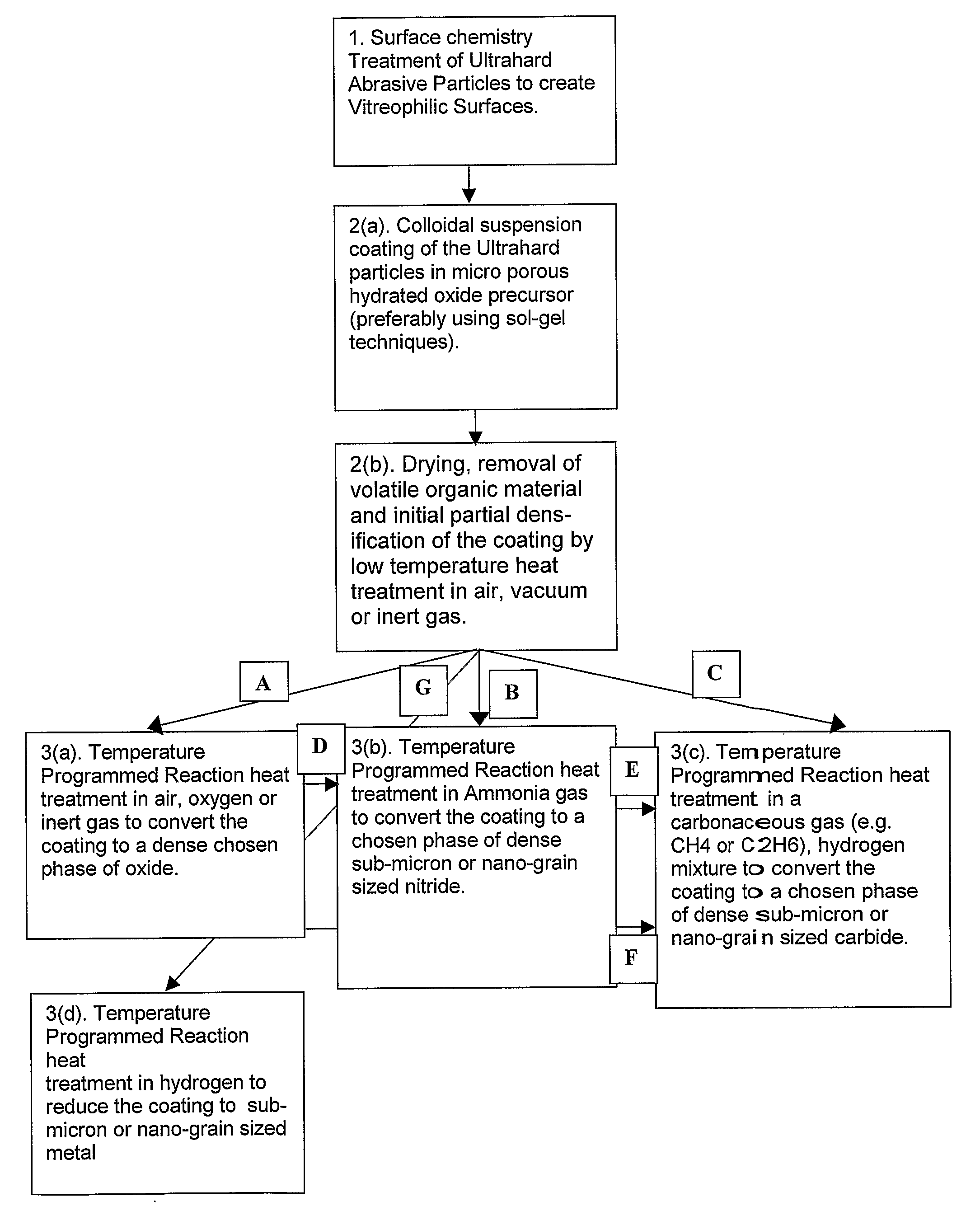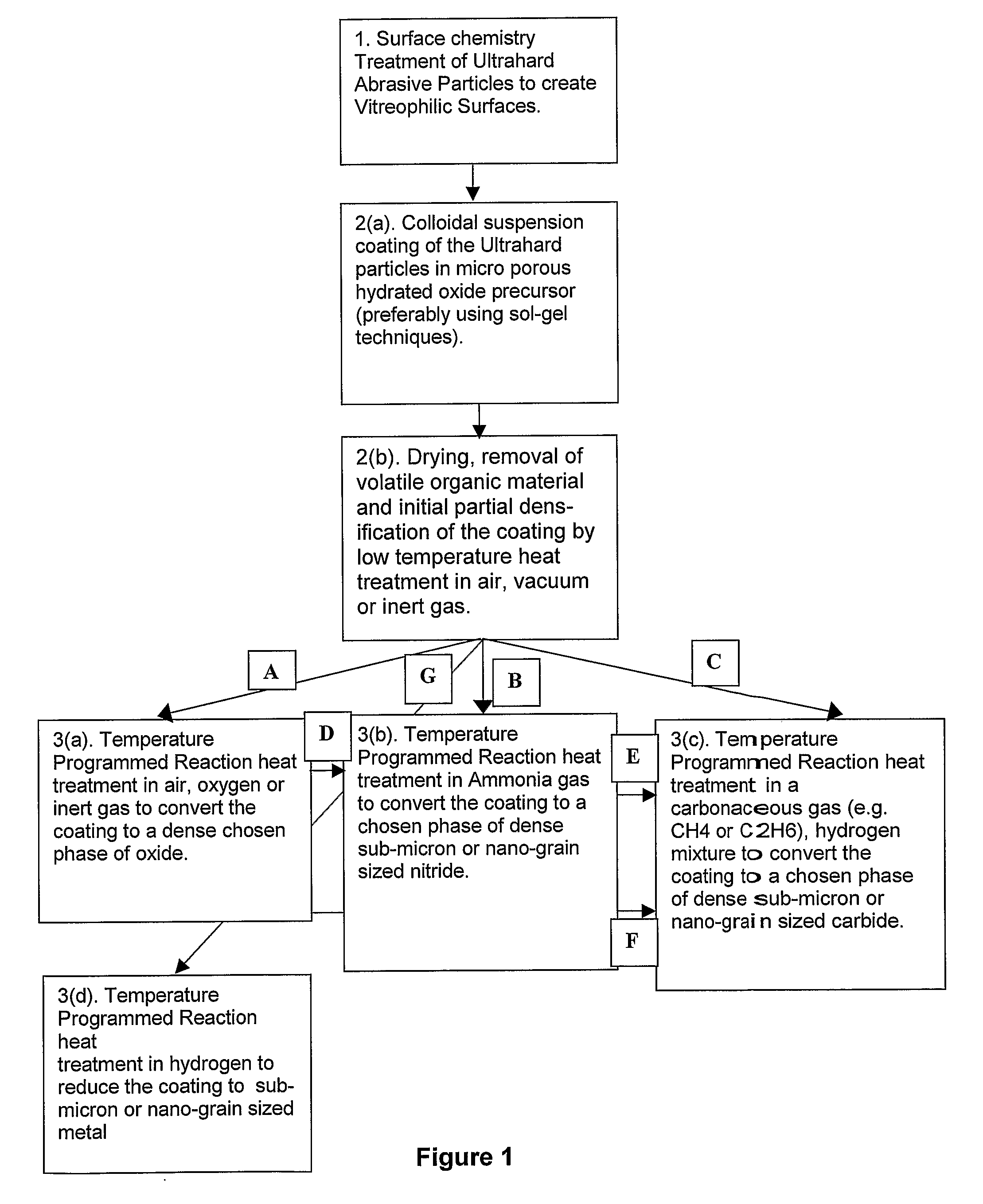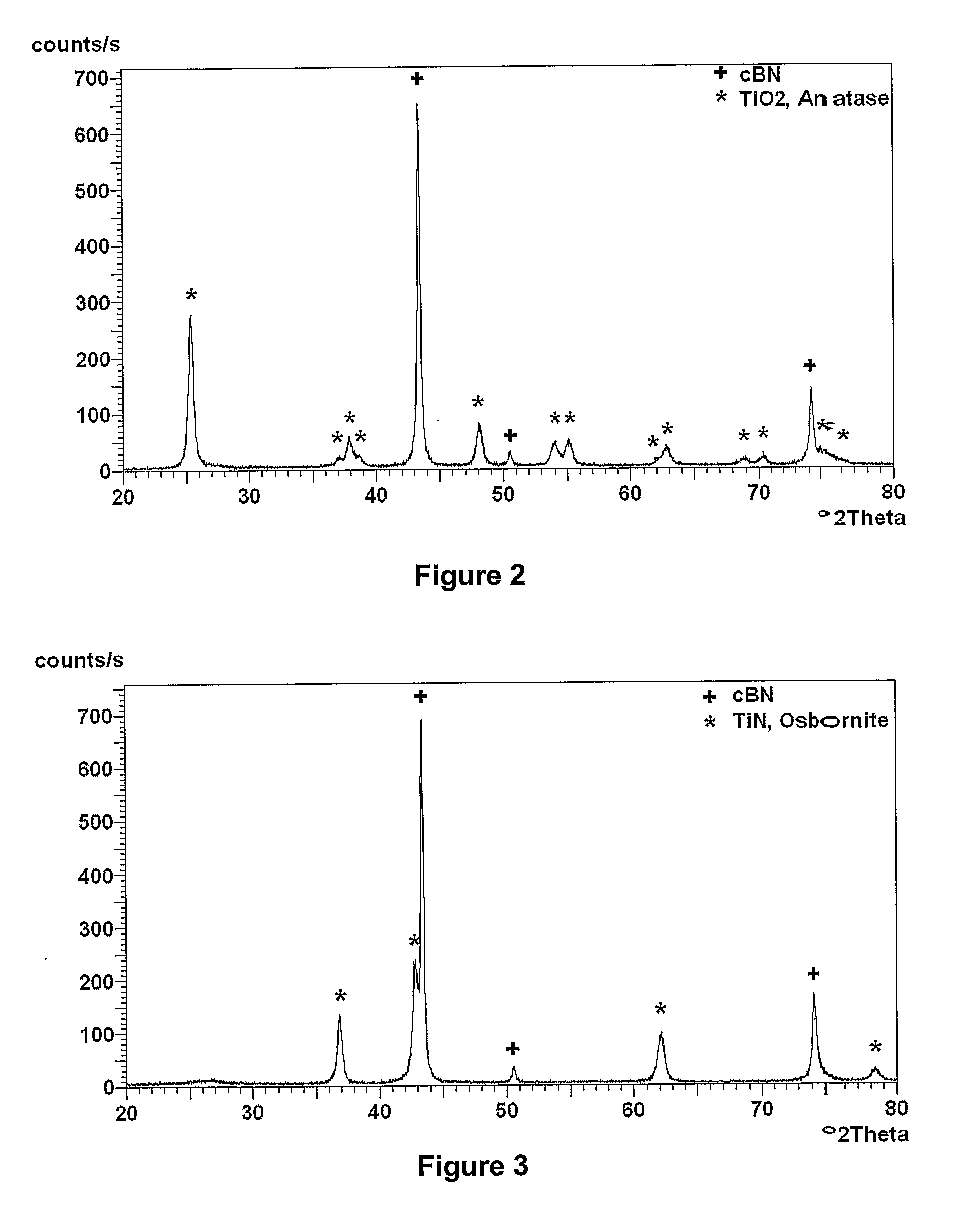Coated Abrasive Materials And Method Of Manufacture
a technology of applied in the field of coating abrasive particles and materials, can solve the problems of limiting the making and use of such abrasive wheels and articles, and oxidation of diamond particles
- Summary
- Abstract
- Description
- Claims
- Application Information
AI Technical Summary
Benefits of technology
Problems solved by technology
Method used
Image
Examples
example 1
[0090]50 g of sub-micron cubic boron nitride, of average particle size 0.7 micron, in the general size range of from 0.5 to 1.0 micron was treated in fuming concentrated sulphuric acid to which was added potassium nitrate. After washing and drying the sub-micron cBN was further heated in air at 600° C. for 30 minutes. These procedures ensured that the cBN surface chemistry was dominated by oxygen related functional groups and was thus rendered vitreophilic.
[0091]15 g of this sub-micron surface treated cBN was then suspended in 865 ml of pure ethanol in a beaker to which had been added 7.3 ml of de-ionized water. The suspension was vigorously stirred with a paddle stirrer at about 100 rpm. 15.3 g of titanium iso-propoxide liquid, Ti(OC3H7)4, was dissolved in 100 ml of anhydrous ethanol. This solution was then slowly added to the cBN / ethanol / water suspension in a drop-wise manner over a period of 1 hr, at room temperature (about 25° C.), while continuing to stir. Stirring was continue...
example 2
[0094]30 g of cBN powder of average particle size 2 microns was suspended in a 1 to 1 mixed solution of 15% hydrogen peroxide, H2O2, and 15% ammonium hydroxide, NH4OH, in water. This served to hydrolyze the surfaces of the cBN particles and thus render them vitreophilic. The 2 micron cBN powder was then removed from suspension by filtering and washed in de-ionized water.
[0095]25.5 g of the cBN powder so prepared was then suspended in 1440 ml of ethanol to which had been added 13.1 ml of de-ionized water. The suspension was ultrasonically probed for 15 min in order to break up any agglomerates of cBN particles. 20.7 g of titanium iso-propoxide was dissolved in 100 ml of anhydrous ethanol. This solution was then added to the vigorously stirred suspension of cBN in the ethanol / water in a drop-wise fashion over a period of 1 hr at room temperature. After addition the suspension was stirred for a further 2 hrs and then left to age overnight. The particulate material was then removed from...
example 3
[0099]105 g of 120 / 140 US mesh, (105 to 125 μm), facetted, crystalline cBN was treated in boiling, 32 vol-% hydrochloric acid, washed in water and dried. This material was then heated in air at 650° C. for 1 hr to slightly oxidize the surfaces of the particles.
[0100]The cBN particles were then suspended in 500 ml of pure ethanol to which had been added 10.6 ml of de-ionized water. The suspension was created and maintained by mechanically stirring with a paddle stirrer at about 100 rpm. 20 g of titanium iso-propoxide of formula Ti(OCH(CH3)2)4 was dissolved in 100 ml of pure anhydrous ethyl alcohol and this solution slowly added to the stirred suspension, in a drop wise fashion, over a period of 2 hrs. The suspension was then stirred for a further 2 hrs to allow the hydrolysis and polycondensation reactions to approach completion. The cBN particulate material was then washed in ethyl alcohol three times by settling and decanting. After a final decantation the material was allowed to d...
PUM
| Property | Measurement | Unit |
|---|---|---|
| thicknesses | aaaaa | aaaaa |
| temperatures | aaaaa | aaaaa |
| temperatures | aaaaa | aaaaa |
Abstract
Description
Claims
Application Information
 Login to View More
Login to View More - R&D
- Intellectual Property
- Life Sciences
- Materials
- Tech Scout
- Unparalleled Data Quality
- Higher Quality Content
- 60% Fewer Hallucinations
Browse by: Latest US Patents, China's latest patents, Technical Efficacy Thesaurus, Application Domain, Technology Topic, Popular Technical Reports.
© 2025 PatSnap. All rights reserved.Legal|Privacy policy|Modern Slavery Act Transparency Statement|Sitemap|About US| Contact US: help@patsnap.com



